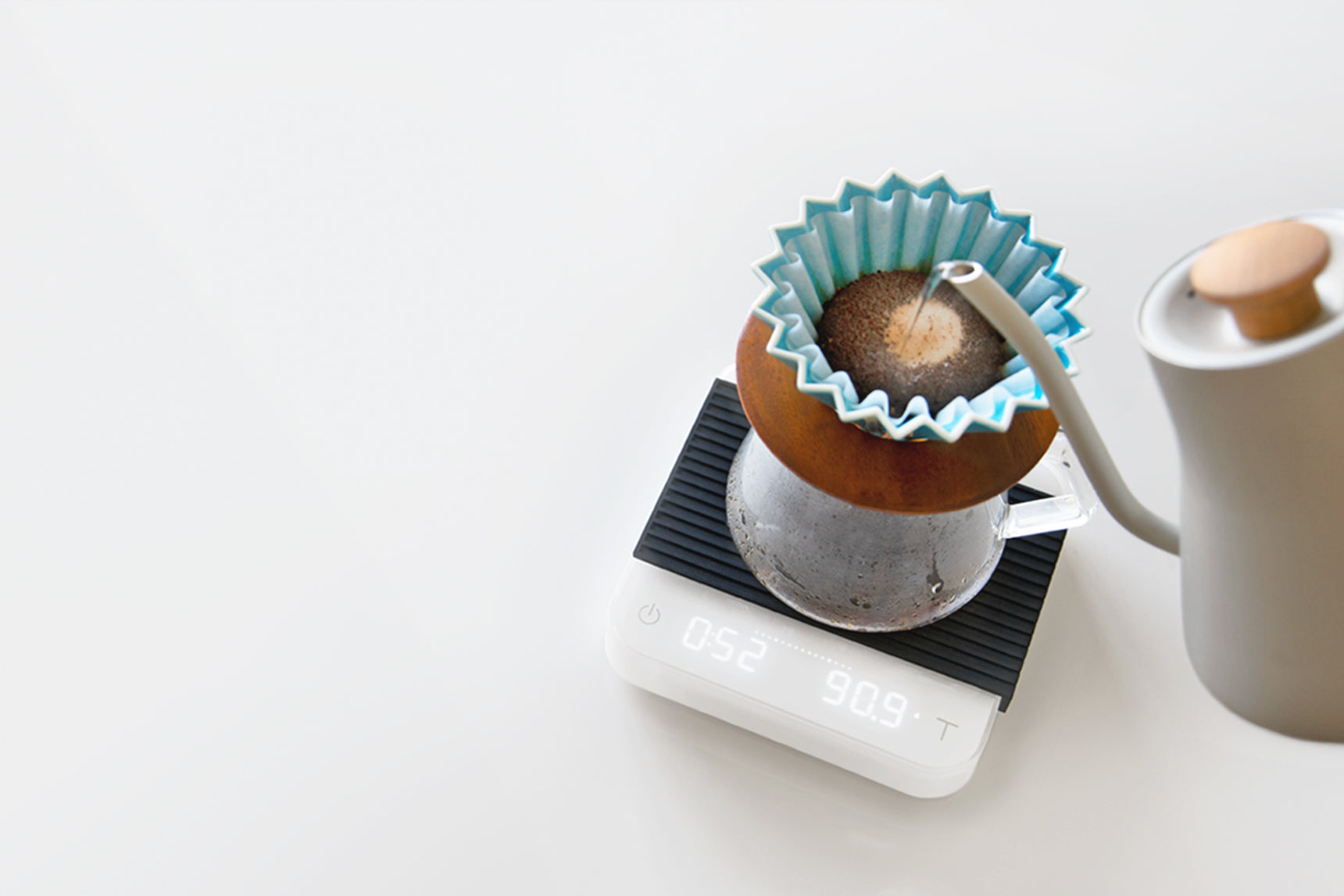This continues our technical series of Acaia University. This post addresses a couple of key questions we receive about the scale:
1) Why is the scale counting down after I finish brewing?
2) Why should I use a heat pad on the scale?

Evaporation

According to our research, a bottle of hot water (at 90ºC +), will evaporate around 1.0-1.5 g within 5 minutes unless the bottle is completely sealed. Acaia scales such as our Pearl series are sensitive enough to read evaporation.


Some loss in weight on the left when plate was lifted and water drops were lost.
Evaporation speed is affected by liquid temperature, room temperature, atmospheric pressure, liquid density and other causes.
Weighing sensor: Load cell
To understand an electronic scale’s reaction to temperature, you need to understand how the weighing sensor works. The most common sensor is the load cell. The load cell is formed by a piece of alloy and a strain gauge. The strain gauge will detect the slight shape shifting of the alloy by changing the resistance value.

With the aid of electronic circuits, the change in resistance is converted as weight values, which then becomes the digital display you see on your scale.
Imagine a spring. Placing an object on the spring will shift it downward. Placing too heavy of an object immediately on the spring may cause permanent strain and damage to it. Load cells work in this way.
Unfortunately, electric resistance is naturally influenced by temperature. In the case of the scale, there is environmental temperature and temperature of the object placed on it.
Scale standards
The international weighing standard OIML creates standards for lab scales. Consumer scales do not need to.
If one of our scales, such as the Pearl, was a lab scale under the OIML standard, we would be classified as a Class II scale. Scales are classified according to division of readout and range. Below is a comparison of the original Acaia Pearl vs a Class II balance. Class II digital balances are allowed a 0.5e (error) for every 5ºC difference in temperature (between room and brew).
Under a Class II standard, the original Pearl is allowed a 5 gram variance due to temperature. Because we are aware of the accuracy needed for coffee brewing, our production team tests each scale with a heated water pot at 100ºC. If the temperature drifts beyond +/- 2 g within six minutes, we do not use the load cell.

Strategies to avoid temperature effects
To avoid the effects of temperature, we recommend a few strategies:
1) Isolation
This is the easiest of all the strategies. Leave more space between the heat source and the load cell to minimize temperature effect. Putting a heat pad, like the Acaia Heat Resistant Pad or Coaster will help. You need materials that are poor conductors of heat. Our heat pads are made of thick silicone and are grooved to dissipate heat. Alternatively, you can use a pour over stand like the Atlas Brew Stand.
2) Electronic Compensation
In theory, we can simply use the same amount of electronic resistance to neutralize the temperature effect. In practice, this reduces temperature effect, not eliminates.
3) Software Compensation
Another theory is that we can place the scale into a temperature-stabled room (creating an ideal environment) to record the effects and have the scale respond to it. Again, theoretically, it’s possible. But practically speaking, producing such a scale would mean higher costs. Working temperature
Normally the working temperature of an electronic scale is 5˚C - 35˚C. For all of our scales, we recommend 15ºC - 40ºC in the room.
This is related to the electronic parts used within the electronic scale. Yes, you can use your laptop in 32ºC, but it is not advised and the high temperature will affect the use of the laptop.

